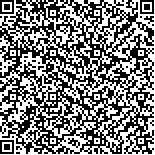北斗三号新信号体制共视时间比对
2021,43(6):66-73
张继海
中国科学院国家授时中心, 陕西 西安 710600;
中国科学院大学, 北京 100049;
中国科学院时间频率基准重点实验室, 陕西 西安 710600,zhangntsc@126.com
董绍武
中国科学院国家授时中心, 陕西 西安 710600;
中国科学院时间频率基准重点实验室, 陕西 西安 710600;
中国科学院大学 天文与空间科学学院, 北京 100049,sdong@ntsc.ac.cn
袁海波
中国科学院国家授时中心, 陕西 西安 710600;
中国科学院大学, 北京 100049;
中国科学院时间频率基准重点实验室, 陕西 西安 710600
广伟
中国科学院国家授时中心, 陕西 西安 710600;
中国科学院时间频率基准重点实验室, 陕西 西安 710600
赵书红
中国科学院国家授时中心, 陕西 西安 710600;
中国科学院时间频率基准重点实验室, 陕西 西安 710600
王威雄
中国科学院国家授时中心, 陕西 西安 710600;
中国科学院时间频率基准重点实验室, 陕西 西安 710600;
中国科学院大学 天文与空间科学学院, 北京 100049
中国科学院国家授时中心, 陕西 西安 710600;
中国科学院大学, 北京 100049;
中国科学院时间频率基准重点实验室, 陕西 西安 710600,zhangntsc@126.com
董绍武
中国科学院国家授时中心, 陕西 西安 710600;
中国科学院时间频率基准重点实验室, 陕西 西安 710600;
中国科学院大学 天文与空间科学学院, 北京 100049,sdong@ntsc.ac.cn
袁海波
中国科学院国家授时中心, 陕西 西安 710600;
中国科学院大学, 北京 100049;
中国科学院时间频率基准重点实验室, 陕西 西安 710600
广伟
中国科学院国家授时中心, 陕西 西安 710600;
中国科学院时间频率基准重点实验室, 陕西 西安 710600
赵书红
中国科学院国家授时中心, 陕西 西安 710600;
中国科学院时间频率基准重点实验室, 陕西 西安 710600
王威雄
中国科学院国家授时中心, 陕西 西安 710600;
中国科学院时间频率基准重点实验室, 陕西 西安 710600;
中国科学院大学 天文与空间科学学院, 北京 100049
摘要:
为促使北斗系统特别是北斗三号系统尽早加入国际原子时计算,利用中国科学院国家授时中心以及捷克无线电工程和电子学院两个守时实验室接收机产生的北斗三号新信号体制观测数据,开展基于北斗三号新信号体制共视时间比对试验。结果表明,北斗三号信号的多路径噪声影响小于北斗二号信号,且信噪比优于北斗二号信号。对比已有的研究,北斗三号新信号体制(B1C和B2a)共视时间比对的噪声相对于北斗三号卫星播发的北斗二号兼容信号体制(B1I和B3I)有较大的改善,其结果与GPS、Galileo共视比对结果相当,且在零基线共钟比对中,基于北斗三号新信号体制比对钟差的标准偏差相对于北斗二号信号提高了40%以上;利用北斗三号新信号体制共视得到的亚欧两地钟差噪声小于北斗二号信号,且比对钟差的稳定度相对于北斗二号提高了10%以上。该试验也可为北斗三号时间比对纳入国际原子时计算提供相关的研究基础。
为促使北斗系统特别是北斗三号系统尽早加入国际原子时计算,利用中国科学院国家授时中心以及捷克无线电工程和电子学院两个守时实验室接收机产生的北斗三号新信号体制观测数据,开展基于北斗三号新信号体制共视时间比对试验。结果表明,北斗三号信号的多路径噪声影响小于北斗二号信号,且信噪比优于北斗二号信号。对比已有的研究,北斗三号新信号体制(B1C和B2a)共视时间比对的噪声相对于北斗三号卫星播发的北斗二号兼容信号体制(B1I和B3I)有较大的改善,其结果与GPS、Galileo共视比对结果相当,且在零基线共钟比对中,基于北斗三号新信号体制比对钟差的标准偏差相对于北斗二号信号提高了40%以上;利用北斗三号新信号体制共视得到的亚欧两地钟差噪声小于北斗二号信号,且比对钟差的稳定度相对于北斗二号提高了10%以上。该试验也可为北斗三号时间比对纳入国际原子时计算提供相关的研究基础。
基金项目:
国家自然科学基金资助项目(11773030);中国科学院国家授时中心“青年创新人才”资助项目(NTSC青创201804);中国科学院“西部之光”青年学者B类资助项目(XAB2019B13)
国家自然科学基金资助项目(11773030);中国科学院国家授时中心“青年创新人才”资助项目(NTSC青创201804);中国科学院“西部之光”青年学者B类资助项目(XAB2019B13)
Common view time comparison by new signal system of BDS-3
ZHANG Jihai
National Time Service Center, Chinese Academy of Sciences, Xi′ an 710600, China;
University of Chinese Academy of Sciences, Beijing 100049, China;
Key Laboratory of Time and Frequency Primary Standards, Chinese Academy of Sciences, Xi′ an 710600, China,zhangntsc@126.com
DONG Shaowu
National Time Service Center, Chinese Academy of Sciences, Xi′ an 710600, China;
Key Laboratory of Time and Frequency Primary Standards, Chinese Academy of Sciences, Xi′ an 710600, China;
School of Astronomy and Space Science, University of Chinese Academy of Sciences, Beijing 100049, China,sdong@ntsc.ac.cn
YUAN Haibo
National Time Service Center, Chinese Academy of Sciences, Xi′ an 710600, China;
University of Chinese Academy of Sciences, Beijing 100049, China;
Key Laboratory of Time and Frequency Primary Standards, Chinese Academy of Sciences, Xi′ an 710600, China
GUANG Wei
National Time Service Center, Chinese Academy of Sciences, Xi′ an 710600, China;
Key Laboratory of Time and Frequency Primary Standards, Chinese Academy of Sciences, Xi′ an 710600, China
ZHAO Shuhong
National Time Service Center, Chinese Academy of Sciences, Xi′ an 710600, China;
Key Laboratory of Time and Frequency Primary Standards, Chinese Academy of Sciences, Xi′ an 710600, China
WANG Weixiong
National Time Service Center, Chinese Academy of Sciences, Xi′ an 710600, China;
Key Laboratory of Time and Frequency Primary Standards, Chinese Academy of Sciences, Xi′ an 710600, China;
School of Astronomy and Space Science, University of Chinese Academy of Sciences, Beijing 100049, China
National Time Service Center, Chinese Academy of Sciences, Xi′ an 710600, China;
University of Chinese Academy of Sciences, Beijing 100049, China;
Key Laboratory of Time and Frequency Primary Standards, Chinese Academy of Sciences, Xi′ an 710600, China,zhangntsc@126.com
DONG Shaowu
National Time Service Center, Chinese Academy of Sciences, Xi′ an 710600, China;
Key Laboratory of Time and Frequency Primary Standards, Chinese Academy of Sciences, Xi′ an 710600, China;
School of Astronomy and Space Science, University of Chinese Academy of Sciences, Beijing 100049, China,sdong@ntsc.ac.cn
YUAN Haibo
National Time Service Center, Chinese Academy of Sciences, Xi′ an 710600, China;
University of Chinese Academy of Sciences, Beijing 100049, China;
Key Laboratory of Time and Frequency Primary Standards, Chinese Academy of Sciences, Xi′ an 710600, China
GUANG Wei
National Time Service Center, Chinese Academy of Sciences, Xi′ an 710600, China;
Key Laboratory of Time and Frequency Primary Standards, Chinese Academy of Sciences, Xi′ an 710600, China
ZHAO Shuhong
National Time Service Center, Chinese Academy of Sciences, Xi′ an 710600, China;
Key Laboratory of Time and Frequency Primary Standards, Chinese Academy of Sciences, Xi′ an 710600, China
WANG Weixiong
National Time Service Center, Chinese Academy of Sciences, Xi′ an 710600, China;
Key Laboratory of Time and Frequency Primary Standards, Chinese Academy of Sciences, Xi′ an 710600, China;
School of Astronomy and Space Science, University of Chinese Academy of Sciences, Beijing 100049, China
Abstract:
In order to promote the application of BDS (BeiDou navigation satellite system), especially the BDS-3 to join TAI (international atomic time) calculation, BDS-3 common view time comparison was implemented by using the pseudo code measured data of BDS-3 new signal between National Time Service Center of Chinese Academy of Sciences and the Institute of Photonics and Electronics Academy of Sciences of the Czech Republic. The results show that the signal of multipath noise and signal-to-noise ratio of BDS-3 are less than those of BDS-2. Compared with the previous studies, the noise of common view time comparison based on new BDS-3(B1C & B2a) signal is much better than that of the BDS-2(B1I & B3I) compatible signal, which is broadcasted by the BDS-3 satellite, and the results are similar to those of GPS and Galileo, the standard deviation of the result based on BDS-3 signal is increased by more than 40% compared with BDS-2 signal. The noise of BDS-3 single common view is smaller than that of BDS-2, and frequency stability of result is increased by more than 10% relative to BDS-2. The experiment can provide research foundation for the BDS-3 application in the TAI calculation.
In order to promote the application of BDS (BeiDou navigation satellite system), especially the BDS-3 to join TAI (international atomic time) calculation, BDS-3 common view time comparison was implemented by using the pseudo code measured data of BDS-3 new signal between National Time Service Center of Chinese Academy of Sciences and the Institute of Photonics and Electronics Academy of Sciences of the Czech Republic. The results show that the signal of multipath noise and signal-to-noise ratio of BDS-3 are less than those of BDS-2. Compared with the previous studies, the noise of common view time comparison based on new BDS-3(B1C & B2a) signal is much better than that of the BDS-2(B1I & B3I) compatible signal, which is broadcasted by the BDS-3 satellite, and the results are similar to those of GPS and Galileo, the standard deviation of the result based on BDS-3 signal is increased by more than 40% compared with BDS-2 signal. The noise of BDS-3 single common view is smaller than that of BDS-2, and frequency stability of result is increased by more than 10% relative to BDS-2. The experiment can provide research foundation for the BDS-3 application in the TAI calculation.
收稿日期:
2020-06-22
2020-06-22
